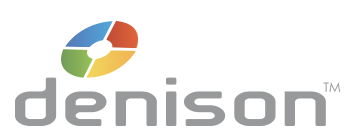Work-Life Balance in the Digital Workplace
By Meredith Grzyb (Client Success Manager)
At the start of the COVID-19 crisis, many companies and employers found themselves in the position of changing their in-person daily operations to a remote setting, leading to what has quickly become the “digital workplace.” The pandemic has and continues to impact our current marketplace and the standard 9-5 work day. This shift into working from home has not come without its challenges, and it provides some valuable insights into how employers, and their employees, can best balance the priorities of their work and life outside of the office.
Denison Consulting’s recent Resilience assessment surveyed over
4,000 employees across different industries on their experiences in this new digital workplace during the pandemic. Our goal as a company was to support organizations and to help them align culturally and thrive in the current work environment. Our research found that the number one topic raised by survey participants was the challenge of maintaining work-life balance while working through the pandemic, and the need for increased support from their organizations in this area. In this article we will look at specific comments and issues voiced by survey participants, some best practices and learnings we can take away from our research, and steps to take forward.
After reading hundreds of comments referencing the need for improved work-life balance in today’s organizations, and several one-on-one interviews that dove further into the topic, there were a few consistent themes that arose. One of the most common were comments from participants indicating uncertainty of how to best prioritize ever-evolving work demands in this new virtual environment. Hand in hand with this came increased anxiety about taking breaks and working a normal schedule. With the remote digital workplace came greater flexibility in work schedules; Zoom meetings replaced quick conversations in the office, and what was once the 9 to 5 work day was replaced by emails filling inboxes at all hours of the night. This constant onslaught of emails and meetings has been a major source for concern and anxiety, and it has pushed the boundaries of achieving work-life balance. One participant of Denison’s Resilience Survey wrote,
This comment was one of many discussing the same dilemma. Additional concerns that arose repeatedly were employee’s fears of losing their job if they weren’t responding at all hours, or the fear of not being seen as “essential.” One example of this was the following comment, “…I have a fairly bad work-life balance (i.e. talking calls and working late, working on days off, never getting a true “break” for lunch or self-care), something that I feel as though I have to do at times in order to remain employed and in the good favor of my supervisors.”

Another theme that was brought up in many comments was trying to strike a balance between family and growing work pressures. Many people found themselves having to take care of their children, or act as caregivers for family members, in addition to juggling work priorities.
As the pandemic continues, and many companies move to a completely digital workplace, it is important to reassess the current work environment for your team/employees, and ensure that there is clarity and sustainability for the organization as a whole. Work-life balance is not only the responsibility of the individual, but it is directly impacted by the company they work for as well. Both the company and the individual play an important part in the discussion of striking an effective work-life balance.
One of the biggest contributing factors for maintaining a successful work-life balance is communication. Every relationship in life requires clear communication, boundaries, and well-defined expectations to be successful. The same holds true for relationships in the workplace. The first important step for organizations is to communicate empathy and understanding to their teams in this challenging environment. This helps encourage the members of your team, and helps build a relationship of trust. The second step is for organizations to make space for and encourage lunch breaks and days off, and to lead by example in those areas. It’s important to note that if you encourage your team to take lunch breaks, don’t schedule zoom meetings during lunch time. The actions of your organization and managers needs to be in alignment with your communication.

Scheduling one-on-one check-ins between managers and direct reports is one positive way to help create space for communication and alignment. Taking time to clarify what priorities and expectations are for your team is essential to their success, and ultimately yours. One example of this would be to clarify in emails that you send when you need a response by. This removes ambiguity and helps the employee/co-worker know how to best prioritize your request with their current work-load. Facilitate conversations with your teammates with children. Determine what an effective schedule would look like for them, and then communicate to the rest of the team on what to expect. While this may seem simple, reading “between the lines” has become increasingly difficult in the current digital environment, and providing as much clarity as possible for your team/colleagues can help increase efficiency and peace of mind.
Another way to improve efficiency in the digital workplace is to limit meetings and to schedule them to allow for work to still be accomplished. One survey respondent wrote the following suggestion, “…We need to be more effective with our video and chat calls as well as strategies to engage customers. Block times for work would also help, example – hold most video calls during 7-10 am or 2-4 pm so we don’t have staggered calls all day long which interrupts the flow of the day. More to be done before meetings so people are prepared will also help.” While meetings are key and important to creating team alignment, they can become a roadblock to an efficient and successful work environment.
Creating work-life balance is also a personal decision/choice. Ensure that you are taking short breaks and lunches. Have conversations with your supervisor about how to best prioritize your workload, and if it’s possible to block off small portions of your week to get work done. Create mental space for yourself, and determine what boundaries should look like and communicate those. When there is greater ambiguity, there is often increased internal emotional anxiety. In a year and season where there is so much that can’t be controlled, and in an environment that is constantly changing, strive for clarity and alignment between you and your colleagues. This clarity and communication will help efficiency to grow, allow for greater adaptability, and will improve work-life balance.






